Acne doesn't always disappear after we leave our teenage years behind. Before turning to expensive products or strong prescriptions, give these essential oil blends for acne a whirl the next time you're battling a breakout. The convenient, ready-to-use formulations let you easily target trouble spots.
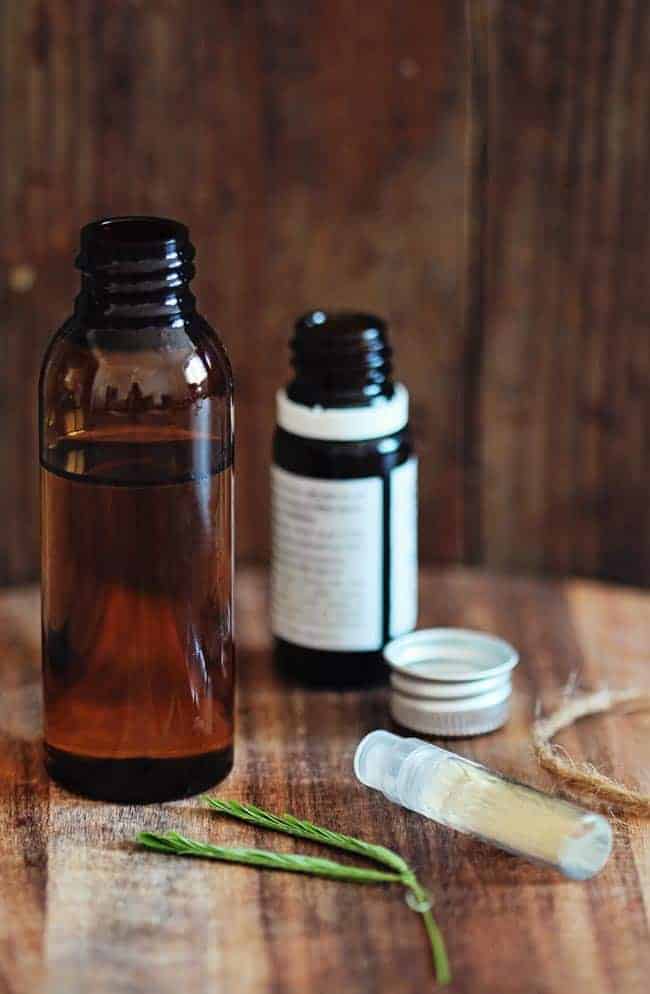
Adult acne is fun, right? Thanks to major hormonal shifts like puberty and perimenopause, you may have enjoyed clear skin all your life only to develop acne as you age. Ugh.
With two teenagers, I've been doing a lot of acne-fighting trial and error, and now those lessons are coming in handy! To keep adult acne at bay, I try to keep my hormones in balance and one of these easy-to-apply zit zappers close by.
Ingredients
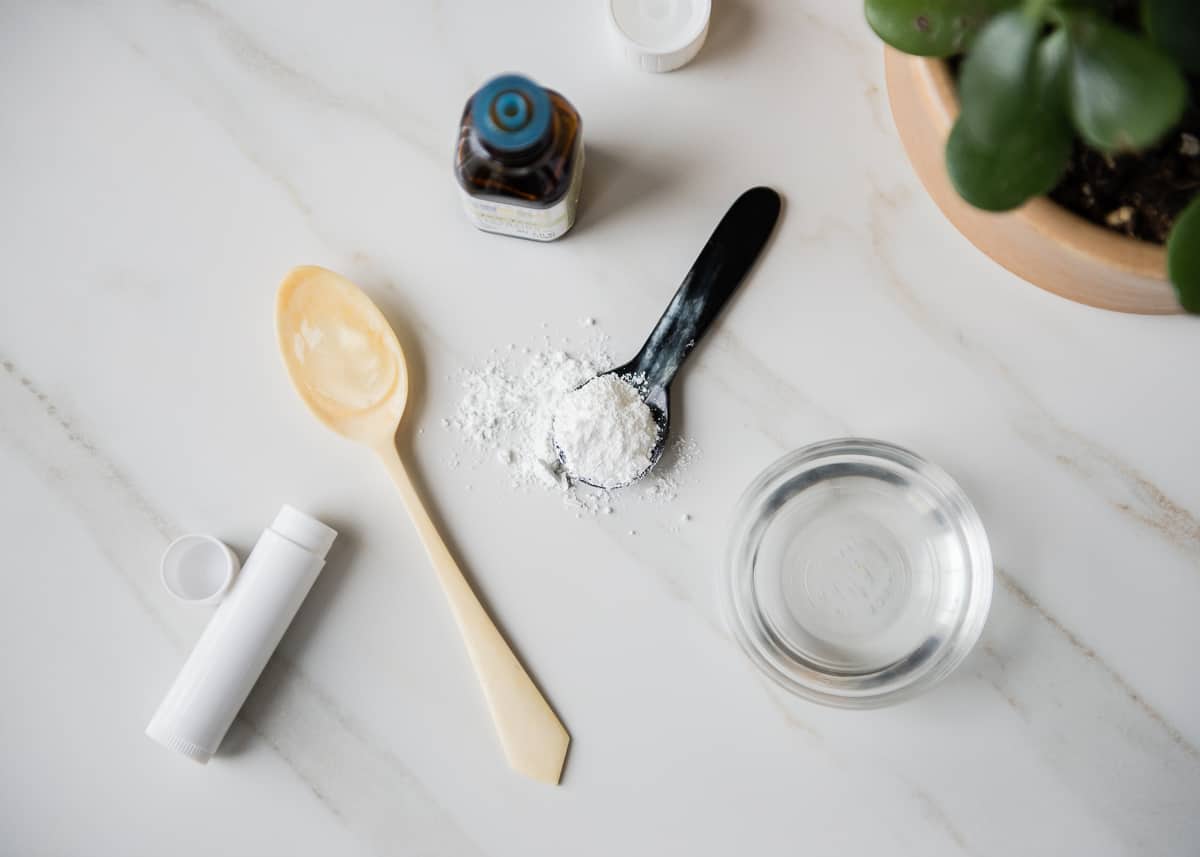
Hemp seed oil — It's noncomedogenic, which means it won't clog pores, and it also has anti-inflammatory properties. Plus, this antioxidant-rich oil protects the skin from free radicals and helps maintain its elasticity and softness.
Tea tree essential oil — Tea tree is praised for its antibacterial and antiseptic properties in fighting acne [source]. Not only is it effective in treating mild to moderate acne, but it isn't as irritating or drying to the skin as other active acne ingredients, such as benzoyl peroxide.
Lavender essential oil — No surprise, this useful all-purpose oil speeds healing, soothes inflammation [source], and helps minimize scarring.
Geranium essential oil — Also called rose geranium (Pelargonium graveolens), this antiseptic and anti-inflammatory essential oil [source] helps control acne and combats oily skin.
Zinc oxide powder (non-nano and lead-free) — Not a typical ingredient that comes to mind when fighting acne, but don't underestimate its power. Its benefits include wound healing, cell regeneration, and bringing inflammation down—all of which work well in fighting acne.
See the recipe card below for quantities.
Instructions
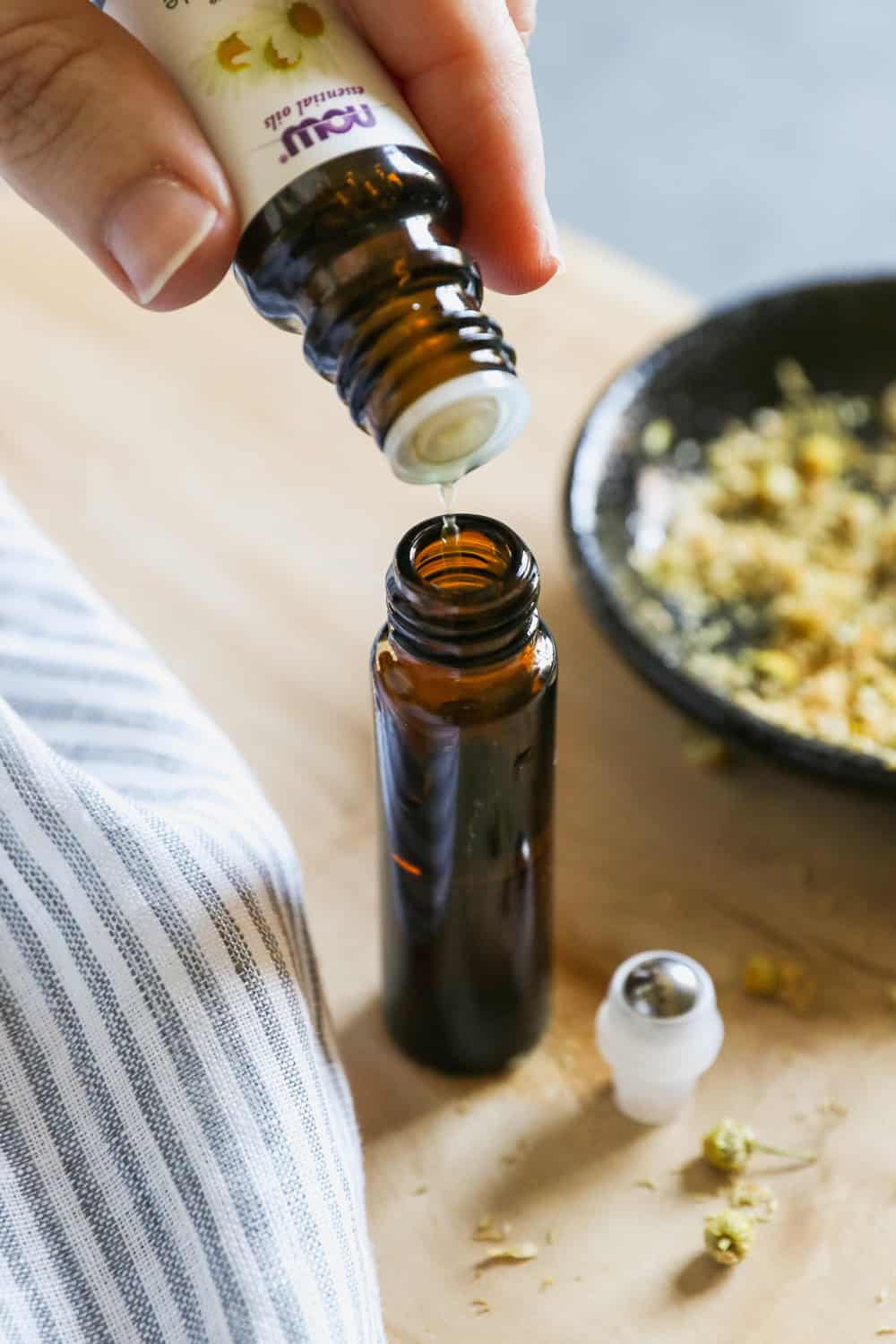
Blemish essential oil blend: Combine lavender, tea tree, and geranium essential oil drops in a small 5 mL bottle. Replace the cap and swirl to combine.
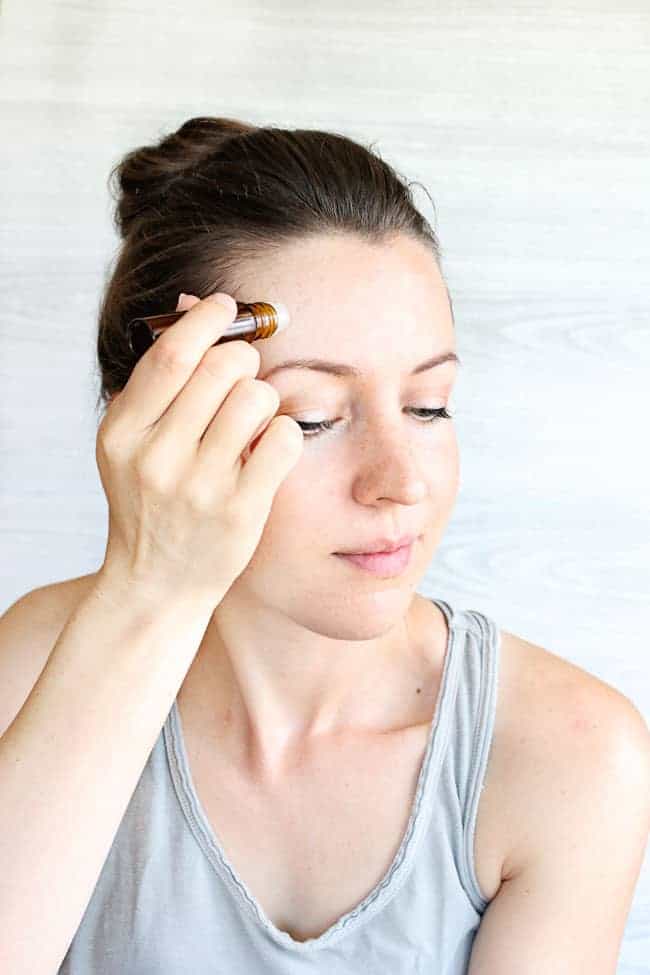
To make a roll-on: Remove the roller ball cap from a 10 mL roll-on applicator bottle and add essential oil drops. Fill the rest of the bottle with hemp seed oil. Replace the cap and roll this oil on the next time you face a breakout.
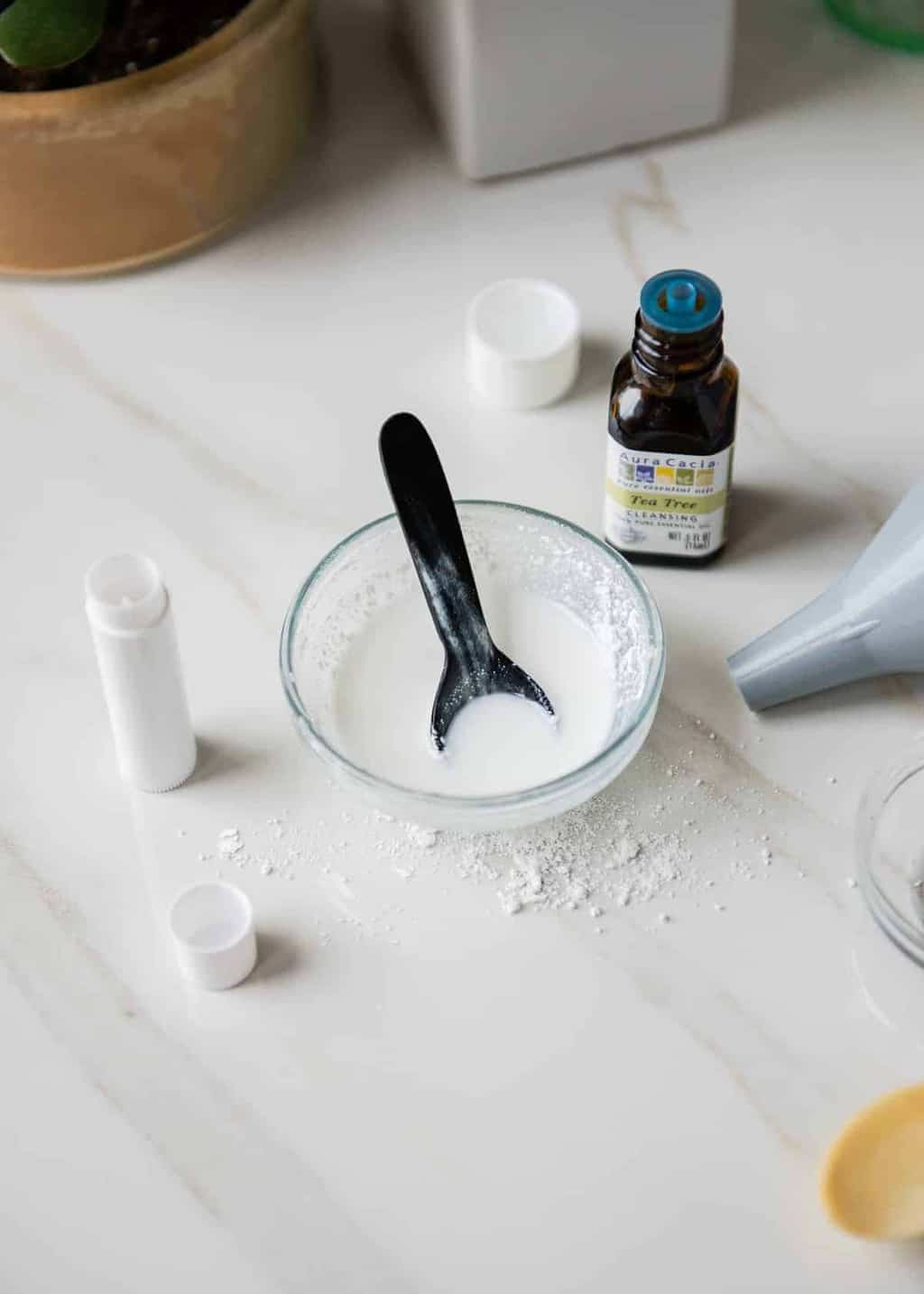
To make a balm: Combine melted coconut oil, zinc oxide powder, and tea tree oil in a small glass bowl and whisk well.
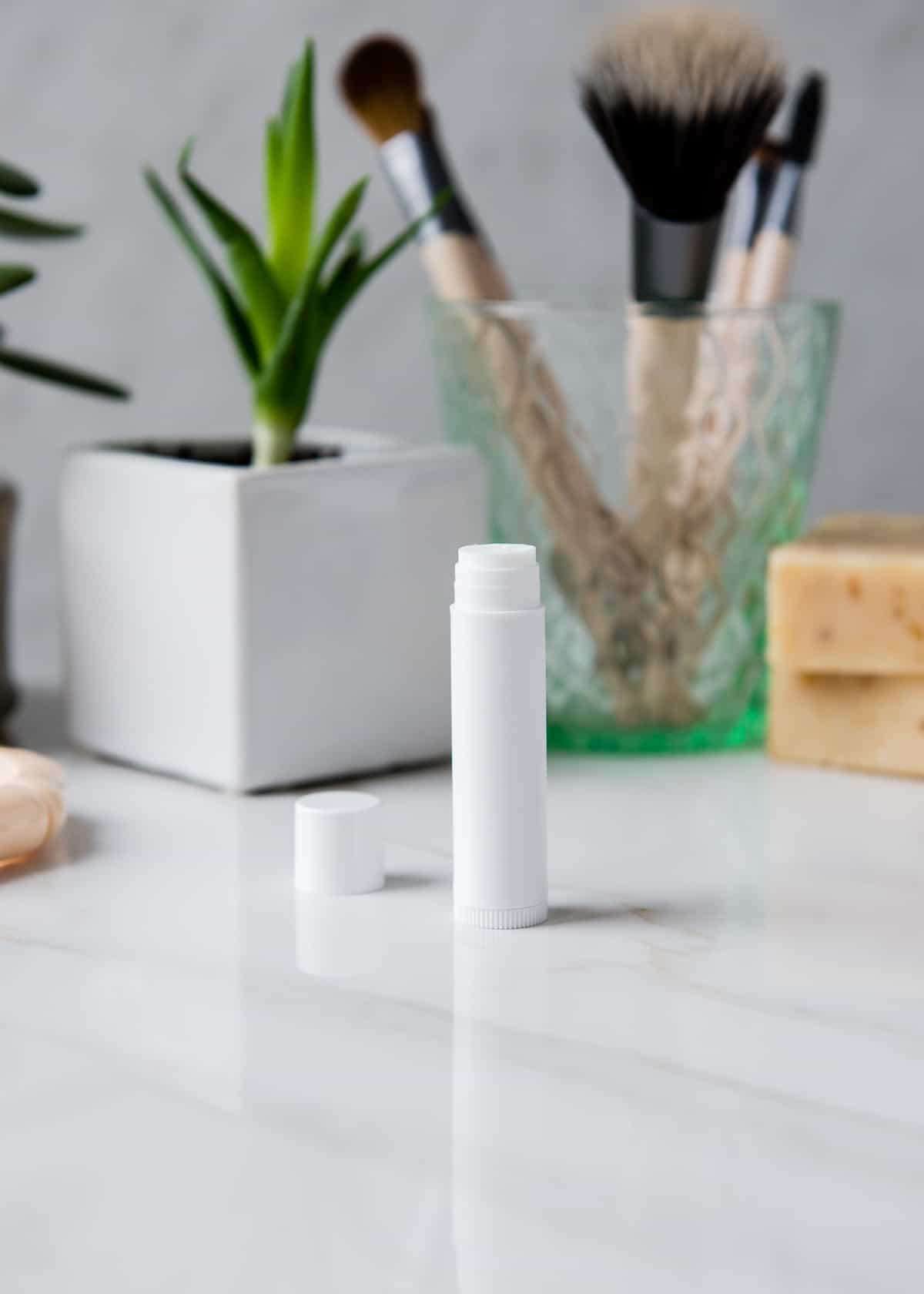
Carefully pour the mixture into an empty lip balm tube (a funnel helps here) and refrigerate to harden.
Hint: These essential oils are gentle on the skin, but irritation can occur if the oil is applied neat (concentrated, without diluting it). Combined and diluted properly with a carrier oil, tea tree, lavender, and geranium essential oils can be extremely helpful in fighting acne-associated bacteria.
Substitutions
You have lots of options when picking carrier oils and essential oils that are effective against acne:
Hemp oil — Jojoba and grapeseed oils are excellent carrier oil choices for fighting acne. Jojoba oil mimics our body's natural oils and is non-greasy, anti-inflammatory, and a natural emollient. Grapeseed oil is both astringent and anti-inflammatory [source], which helps with irritation and regulation of the skin's oil production.
Zinc oxide — You can leave this ingredient out if you prefer.
Essential oils — Try any of our favorite essential oils for acne or one of the blends below.
Coconut oil — If you like a balm but coconut oil makes you break out (which happens for some), I would recommend making 2 balm sticks at once with 2 teaspoons of a carrier oil like hemp or jojoba and add a tiny bit of melted beeswax, like ⅛ of a teaspoon, to give it a solid consistency.
Variations
Try one of these essential oil roll-on blends for breakout-free skin:
1. Overnight Repair Roll-on: Frankincense (3 drops), helichrysum (5 drops), sandalwood (3 drops ), and rosehip (2 teaspoons) oils aid in overnight skin repair and rejuvenation.
2. Oil Balancing Roll-on: Bergamot (4 drops), clary sage (4 drops), cedarwood (3 drops), and tamanu (2 teaspoons) oils regulate sebum production, preventing clogged pores.
3. Soothing Spot Roll-on: Chamomile (6 drops), ylang-ylang (2 drops), and calendula (2 teaspoons) oils provide a calming and healing effect on irritated skin.
4. Scar Fader Roll-on: Helichrysum (5 drops), lavender (5 drops ), and rosehip (2 teaspoons) oils aid in fading acne scars and promoting skin regeneration.
5. Skin Renewal Roll-on: Rosemary (4 drops), myrrh (4 drops), and carrot seed (2 teaspoons) oils stimulate skin renewal and help prevent future breakouts.
6. Pore Refining Roll-on: Cypress (3 drops), lemon (3 drops), juniper berry (3 drops), and jojoba (2 teaspoons) oils tighten pores and minimize their appearance.
7. Antioxidant Boost Roll-on: Neroli (5 drops), grapefruit (2 drops), rose (4 drops), and marula (2 teaspoons) oils provide antioxidant protection and promote healthy skin.
8. Soothing Elixir Blend: Lavender (8 drops), peppermint (2 drops), and lavender and calendula infused oil (2 teaspoons) create a cooling and soothing sensation for inflamed skin.
Essential oils combined with infused herbal oils are a potent combination!

Usage
To use an essential oil roll-on for acne, simply apply your blend directly to the affected areas 1 to 2 times a day. Roll the bottle gently over the skin, focusing on acne spots or blemishes.
Note: Avoid applying roll-ons on broken or irritated skin, and don't forget to conduct a patch test on a small area of skin before full application.
Start with a low concentration: 10–12 drops of essential oil per 2 teaspoons of carrier oil.
Storage
Store essential oil blends and any diluted oils in dark glass bottles away from light and heat to preserve their potency.
Top tip
You can make custom essential oil roll-ons for everything from headaches to PMS. Try this blend for your cuticles, or experiment with making essential oil perfume.
FAQ
Essential oil roll-ons for acne combine the benefits of specific essential oils known for their acne-fighting properties. These oils often have antibacterial, anti-inflammatory, and protective effects, which can help reduce breakouts and promote clearer skin.
Tea tree, lavender, chamomile, and frankincense oils are commonly used in acne roll-ons due to their antibacterial and calming properties. Other oils like rosemary, bergamot, and clary sage may also be included, depending on the specific blend.
Yes, you can apply essential oil roll-ons to areas prone to breakouts to help maintain clearer skin.
The frequency of use can vary depending on the individual and the specific roll-on product. As a general guideline, apply the roll-on 1 to 2 times a day or as directed by the product instructions. Start with a small amount and adjust as needed.
Zit Be Gone Roll-On Recipe
Equipment
- 10 mL roll-on applicator bottle
Materials
Blemish Essential Oil Blend
- 35 drops lavender essential oil
- 15 drops tea tree essential oil
- 15 drops geranium essential oil
Blemish Roll-On
- 10–12 drops acne essential oil blend
- 10 mL hemp seed oil
Blemish Balm
- ½ teaspoon zinc oxide powder
- 1 teaspoon coconut oil, melted
- 5–6 drops acne essential oil blend
Instructions
Blemish Essential Oil Blend
- Combine all essential oils in a small amber-colored 5 mL bottle. Replace the cap and shake to combine. Don't forget to label the bottle.
Blemish Roll-On
- In a 10 mL roll-on applicator, add the drops of essential oil blend.
- Fill to the top with hemp oil and replace the roller ball cap.
- Store in a dark location to keep the roll-on recipe effective.
Blemish Balm
- Combine all of the ingredients in a small glass bowl and whisk well.
- Use the funnel to pour the mixture into the empty lip balm tube and refrigerate to harden.
- Apply the balm or roll this oil on twice a day the next time you face a breakout.
Notes
References
- Pazyar N, et al. A review of applications of tea tree oil in dermatology. Int J Dermatol. 2013.
- Esteves Cardia GF, et al. Effect of lavender (Lavandula angustifolia) essential oil on acute inflammatory response. Evid Based Complementary Altern Med. 2018.
- Boukhatem MN, et al. Rose geranium essential oil as a source of new and safe anti-inflammatory drugs. Libyan J Med. 2013.
- Lin TK, et al. Anti-inflammatory and skin barrier repair effects of topical application of some plant oils. Int J Mol Sci. 2017.


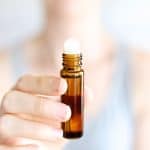
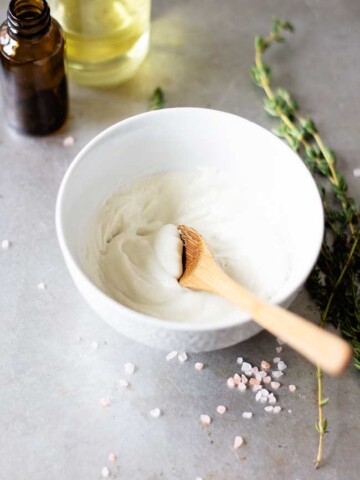
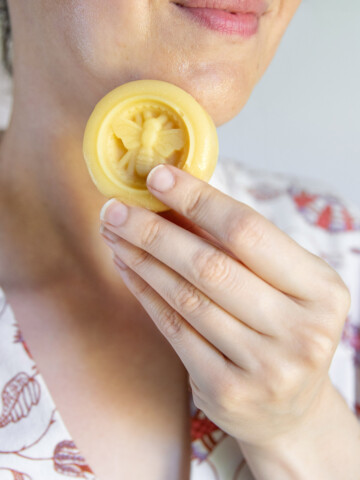
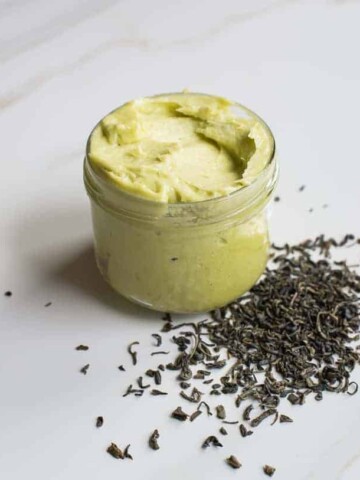
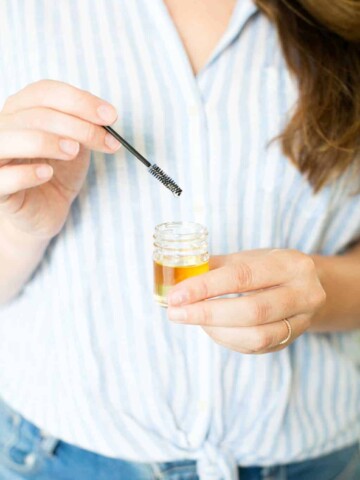
Leave a Comment